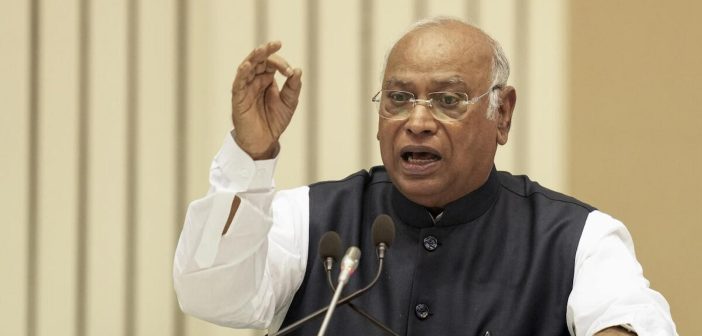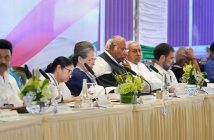The 50% US tariffs on India have sparked outrage, with Congress calling it a diplomatic disaster. The move threatens Indian exports, jobs, and US-India ties. As trade tensions escalate, what does this mean for India’s economy? Can New Delhi navigate this crisis?
US President Donald Trump’s decision to impose 50% US tariffs on India has ignited a fierce political storm. Announced on August 6, 2025, the tariffs target Indian goods due to New Delhi’s continued purchase of Russian oil. The Congress party has slammed the Modi government, labelling it a foreign policy failure. This escalation, effective August 27, adds a 25% penalty to an existing 25% duty. It risks straining India-US diplomatic relations and hurting key export sectors. As tensions rise, the economic and diplomatic fallout demands urgent attention.
Context of the 50% US Tariffs on India
The 50% US tariffs on India stem from a White House executive order signed on August 6, 2025. Titled “Addressing Threats to the US by the Government of the Russian Federation,” it imposes an additional 25% tariff on Indian goods, effective August 27, on top of a 25% duty starting August 7. The US cites India’s purchase of Russian oil as fueling Russia’s war in Ukraine. Most Indian exports, including textiles, leather, and marine products, face tariffs. However, pharmaceuticals, electronics, and energy products are currently exempt. Indian shrimp exports, for instance, will face a 58.26% duty, including trade remedy measures, from August 27.
Congress on Foreign Policy: A Scathing Critique
Congress leaders have fiercely criticised the Modi government over the 50% US tariffs on India. TheCongress President Mallikarjun Kharge called it a “foreign policy disaster.” In a post on X, he accused the government of being “clueless” in handling US-India trade tensions. Kharge claimed Prime Minister Narendra Modi failed to secure a trade deal despite months of negotiations. He highlighted Modi’s silence when Trump claimed to broker an India-Pakistan ceasefire in May 2025, which India denied.
Congress MP Shashi Tharoor urged India to retaliate with 50% tariffs on US goods. He argued that India’s current 17% tariffs on American imports are too low. “No country should threaten us like this,” Tharoor told reporters. Leader of Opposition Rahul Gandhi labelled the tariffs “economic blackmail” to force an unfair trade deal. He urged Modi to protect India’s interests, warning that the tariffs could devastate key sectors.
Government’s Response to the Tariffs
The Indian government has condemned the US trade sanctions on India as “unfair, unjustified, and unreasonable.” The Ministry of External Affairs (MEA) emphasised India’s right to make independent energy decisions. MEA Secretary Dammu Ravi indicated ongoing talks with the US, with momentum expected to increase. New Delhi defended its Russian oil purchases, noting that the US and EU also buy Russian energy. The government downplayed the economic impact, claiming a GDP loss of less than 0.2%. It stressed that critical sectors like pharmaceuticals remain exempt.
US Tariffs on Indian Exports: Economic Jolt with Political Ripples
The newly imposed 50% US tariffs on Indian goods pose not only a grave economic challenge but also carry serious political and electoral implications. With the US being India’s largest export destination, accounting for $87 billion in exports in 2024, the financial blow could be staggering. Congress President Mallikarjun Kharge estimates an economic burden of ₹3.75 lakh crore, warning that this policy failure could deepen unemployment and disrupt key industries ahead of crucial state and national elections.
As Vietnam and Bangladesh enjoy far lower tariffs of 15–20%, India’s global competitiveness is under threat. Politically, the Opposition is using this development to target the Modi government’s foreign policy, calling it a strategic failure that may hurt India’s economic sovereignty and middle class. With general elections approaching in 2026, the tariffs may become a flashpoint in political campaigns, influencing voter sentiment in export-heavy regions like Gujarat, Maharashtra, Tamil Nadu, and Andhra Pradesh.
India-US Diplomatic Relations Under Strain
The 50% US tariffs on India have strained India-US diplomatic relations. India has been a key US partner in countering China, with strengthened defence and energy ties under the Quad framework. However, Trump’s tariffs and his push for a trade deal have complicated ties. His recent overtures to Pakistan, including claims of brokering a Kashmir solution, have irked New Delhi. The absence of key US foreign policy officials in the State and Defence Departments further hinders India’s lobbying efforts.
Trump’s executive order allows tariff modifications if India aligns with US policies or if other nations retaliate. This suggests room for negotiation, but India’s insistence on strategic autonomy may limit concessions. The tariffs contradict earlier US encouragement of India’s Russian oil purchases to stabilise global energy markets. This shift has sparked accusations of double standards, as China faces a temporary tariff truce despite higher Russian oil imports.
Historical Context of US-India Trade Tensions
US-India trade tensions are not new. In October 2019, Trump labelled India the “tariff king.” In September 2024, he called India a “tariff abuser.” A 26% tariff on Indian goods was announced in April 2025, effective April 9. The current 50% tariff escalates this trend, placing India among the most penalised US trading partners, alongside Brazil. Past trade talks have stalled, with India resisting US demands on agriculture and dairy. The failure to secure a bilateral trade agreement has fueled Trump’s aggressive stance.
Public and Expert Opinions
The US tariffs’ impact on the Indian economy has drawn varied reactions. Samajwadi Party MP Awadhesh Prasad urged the government to condemn Trump’s actions in Parliament, asserting that India’s unity and economy remain resilient. Economist Sakshi Gupta from HDFC Bank warned of risks to domestic manufacturing and labour markets. Teresa John from Nirmal Bank suggested India might reduce Russian oil purchases gradually to ease tensions.
Business leaders expressed alarm. The Federation of Indian Export Organisations called the tariffs “extremely shocking,” predicting a 55% impact on US exports. Colin Shah, MD of Kama Jewellery, described the move as a “severe setback.” Some businesses are exploring alternative markets like Dubai and Mexico to offset losses. Despite the challenges, the IMF’s optimistic growth forecasts for India signal cautious optimism.
India Foreign Policy News: Strategic Autonomy at Stake
The tariffs highlight India’s commitment to strategic autonomy, a cornerstone of its foreign policy. Congress leaders emphasised that no nation should penalise India for its non-aligned stance. Kharge stated, “India’s national interest is supreme.” The Congress’s criticism of the Modi government centres on its perceived failure to balance relations with the US and Russia. India’s refusal to halt Russian oil purchases reflects its need for affordable energy, especially for its poor. However, this stance risks further US retaliation, complicating India’s foreign policy.
Looking Ahead: Navigating the Trade War
The 50% US tariffs on India pose a critical test for India’s economic and diplomatic resilience. The government must diversify export markets to Europe and Asia, as suggested by CTI Chairman Brijesh Goyal. Retaliatory tariffs, as proposed by Tharoor, could escalate tensions but signal India’s resolve. Ongoing trade talks offer hope, but Modi’s administration faces pressure to deliver a deal that protects Indian exports under US tariffs. The coming weeks will determine whether India can mitigate the economic fallout and restore stable India-US diplomatic relations.
Conclusion
The 50% US tariffs on India have unleashed a political and economic firestorm. Congress’s sharp criticism underscores the Modi government’s challenges in navigating US-India trade tensions. With key sectors at risk and diplomatic ties strained, India must act swiftly to protect its interests. Diversifying markets and pursuing trade talks are critical steps. The nation’s resolve to uphold strategic autonomy will shape its response to this crisis.
Share your views on how India should respond to the US tariffs in the comments below.




